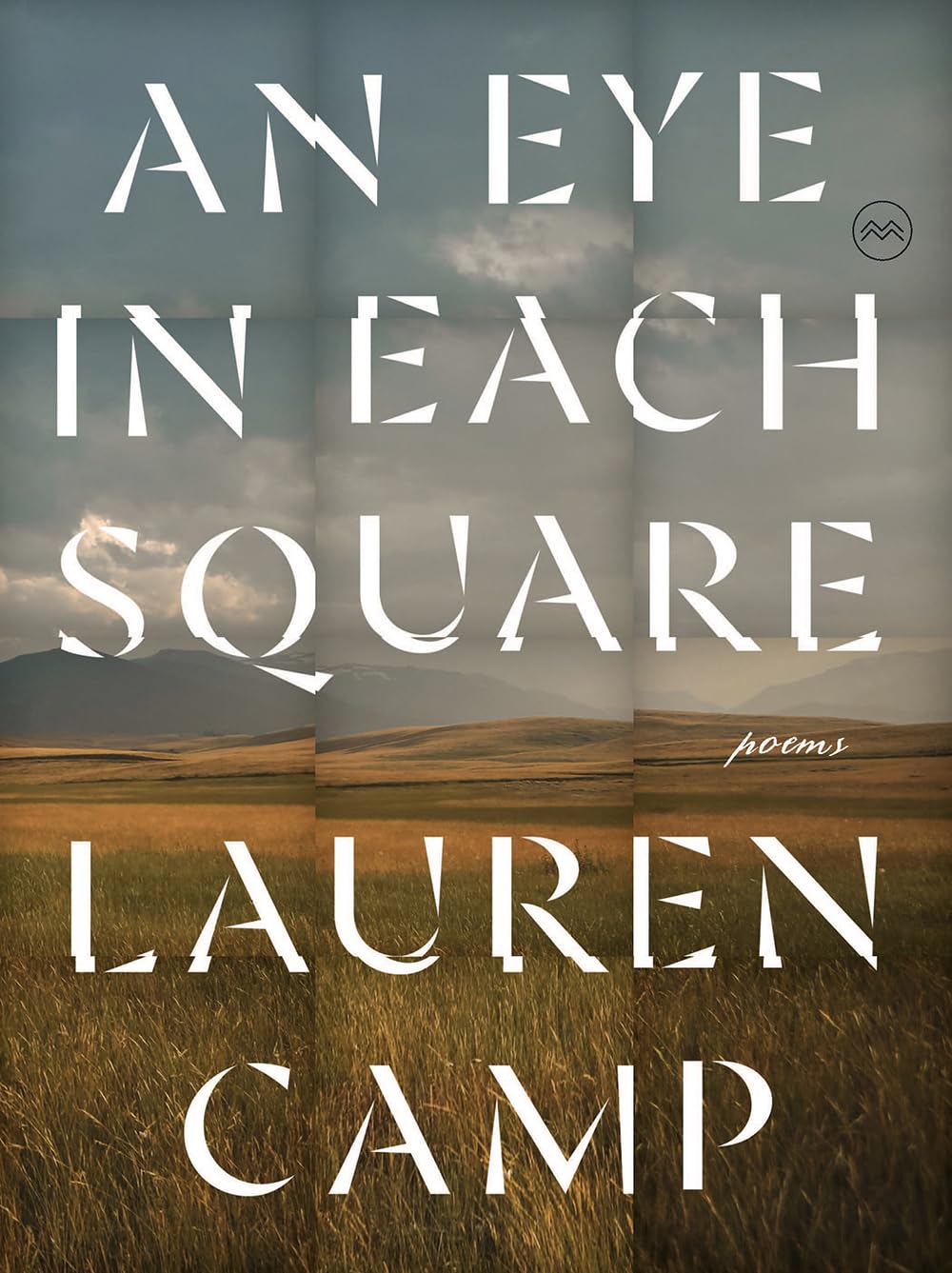Lauren Camp
River River Books ($18)
The artist Agnes Martin slips in and out of Lauren Camp’s An Eye in Each Square like a wraith, an invisible companion. “Must Learn Neither” introduces the book’s tripartite structure and its obsessions: “What I want / is nothing. No meaning, no matter, no more.” Like Martin’s art, Camp’s is private and oblique, not confessional. The poet observes how the artist’s work “made / sacred an emptiness,” and if the poems are ekphrastic, they are also an invocation, a conversation, and the suture of “A line, a line: it never leaves you.” The book’s title is itself drawn from Martin’s description of a family potato farm in Michigan, “an eye in each square of a chequerboard field, all by hand.”
Camp’s poetry admits a stony absence: “the moon rising in the bone-field is more hole than stoic presence.” It can break into an unpunctuated sentence, syntax awry—not unlike Gertrude Stein, whom Martin admired. In “Line Break,” the artist’s “line . . . lets the artist unfinish weariness.” It isn’t difficult from the title to see how the poet’s process parallels the artist’s; Martin’s marks on canvas don’t yield meaning or consolation so much as the desire for an emotional response, but her repetitions were a way of “moving grief to the side.” Camp writes in an end note that Martin and her work remained an enigma, which was precisely what was needed: After having been diagnosed as schizophrenic, she was submitted to shock treatment and became both explorer and interrogator of the psyche.
“Trusting Space” is the longest poem in the book. It opens with the question of “How to ask for joy,” then follows the speaker through the quotidian and mystical events of her day—a cemetery’s “glances,” low water, the sky filled with apparitions: “It is imperative / to see how this is substantial.” Martin figures as both oracle and prophet who has “drawn hurt” and practices erasure—like a poet. Thus the speaker of these poems, who “had plundered past nervous,” is enlaced with the artist, who at last stops burning paintings she judges flawed.
In “Lecture on Nothing,” the speaker is caught in the “antique gaze of Agnes’ / eyes” while Martin “frames the room and the room where she sits is built reliable / around her.” Martin disappeared from an artists’ cooperative in lower Manhattan for New Mexico, building an adobe brick house and a log-cabin studio, a move alluded to in “Tremolo”: “When she quit the city / to break from her constant hysteria, Agnes promised herself the apology // of firmness.” In “Lecture on Nothing,” then, the poet is empowered as the artist inhabits the “reliable” world of her own making. It is, as another poem suggests, a “Self-Portrait with Agnes Martin,” both self-reflective and joined.
The last poem in the book, “White Flower,” observes birds rehearsing scales as “their voices wing out / abundant. /. . . / I unthink.” Martin was profoundly influenced by Zen Buddhism and Taoism, practicing no-thought through meditation. Camp deftly captures the reason why: not to deny the world’s peril but to calmly experience “pasture and idle. / . . . / To grow solace is to measure light / as a purpose.”
After his conversion to Christianity, W. H. Auden famously rewrote the closing of “September 1, 1939”: “We must love one another or die” to “love and die,” seeing it as no choice. Camp is less era-specific, but these are poems of our catastrophic time—of smoke and schism, love and abyss, vigil and disquiet. How one accommodates dread and the beauty of a world going on despite it may be unanswerable, but through her veers of thought and bracing opacity, Camp offers poems that attempt to articulate a response.
Click below to purchase this book through Bookshop and support your local independent bookstore:
Rain Taxi Online Edition Winter 2023-2024 | © Rain Taxi, Inc. 2024

